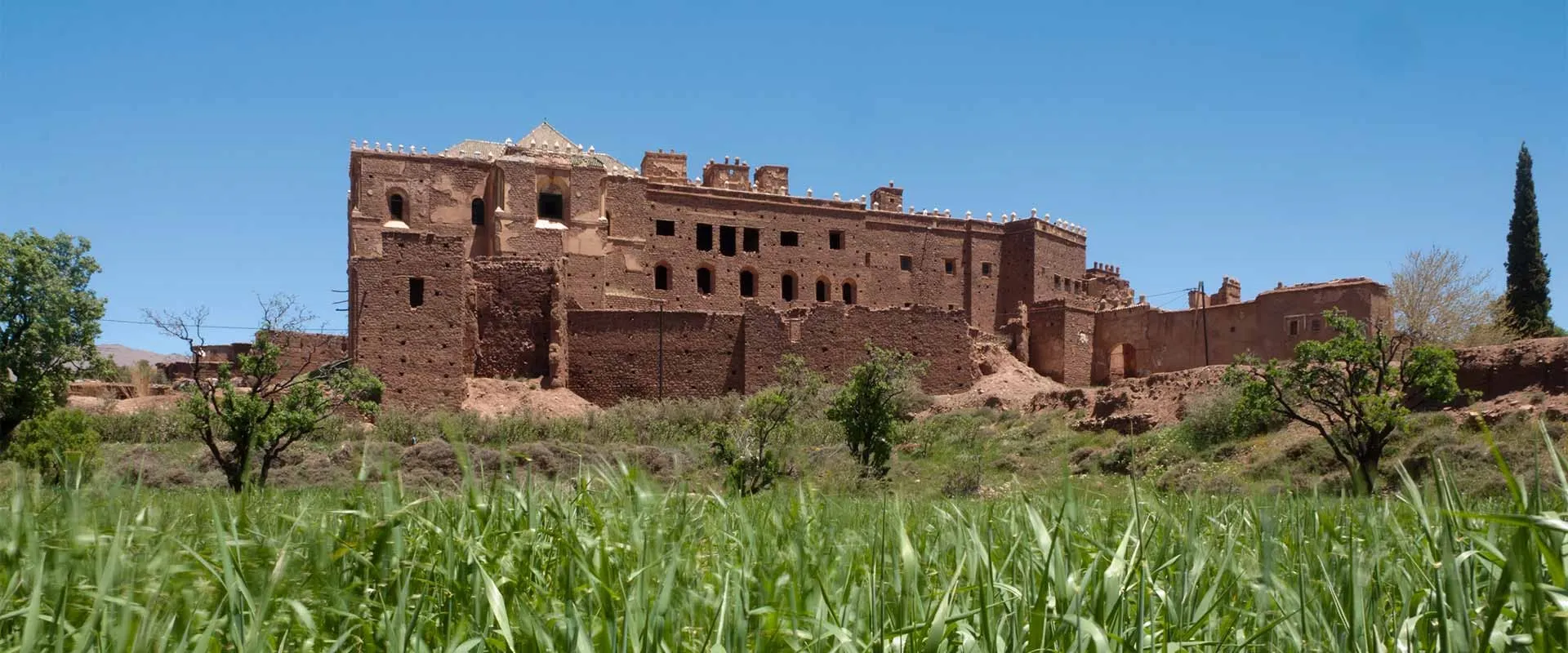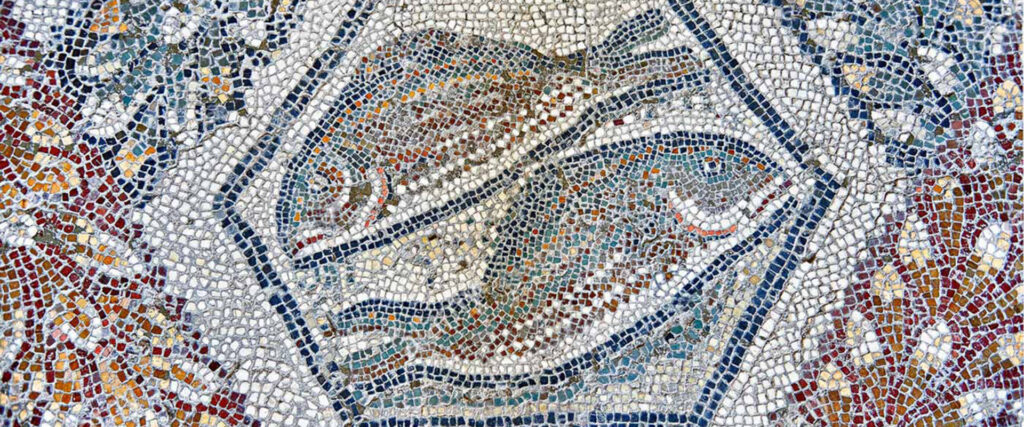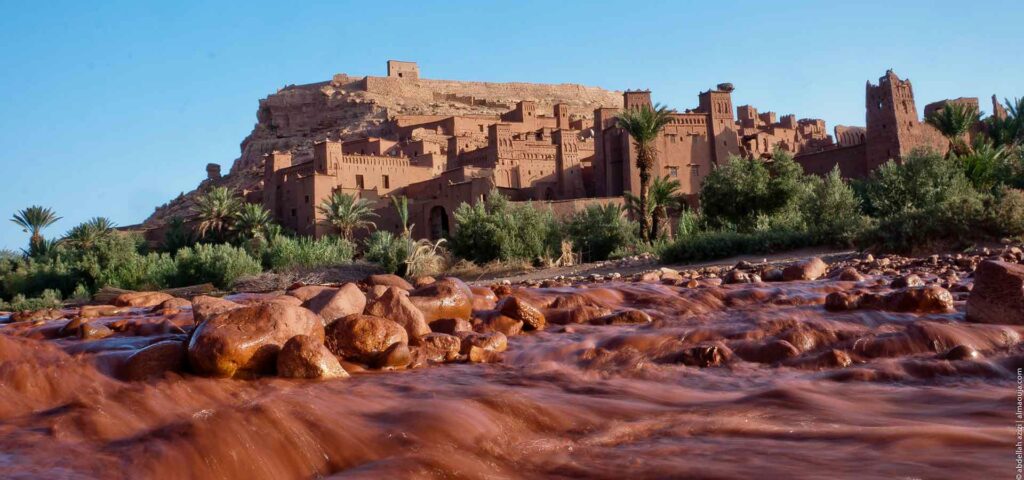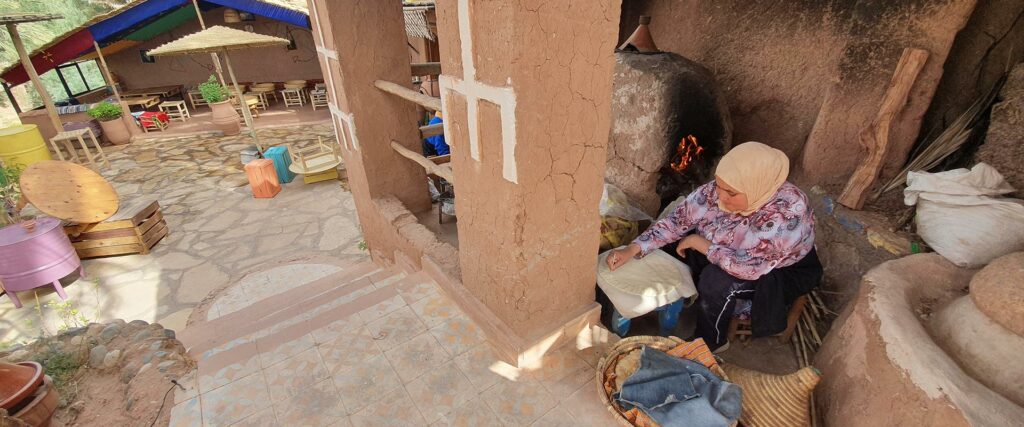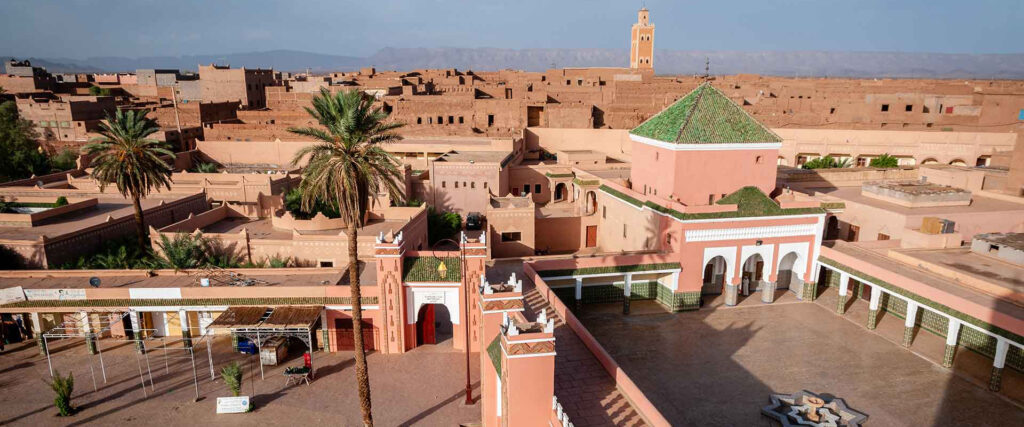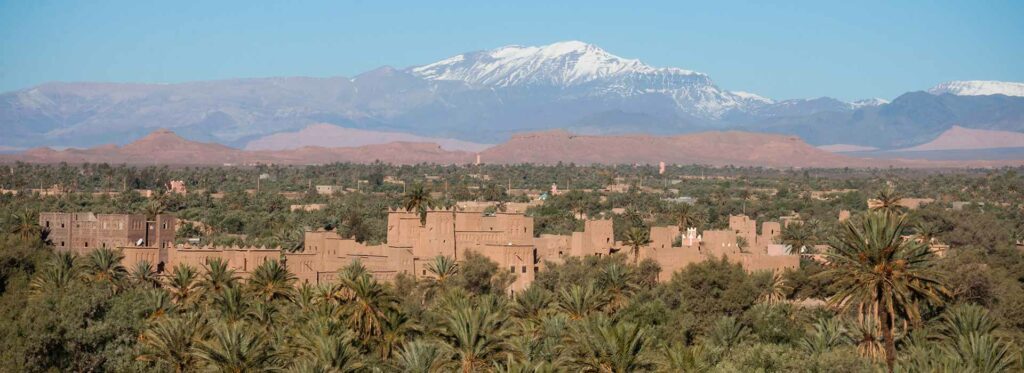Despite his young age, Ali Ahdadi stands as the living memory of Telouet. His deep passion for local history and his close relationship with the elders of the village make him a rare oral source, capable of reconstructing the human, historical, and cultural past of his native land.
As for the dark-skinned population known as the Haratine, they were originally composed of enslaved people brought from Mali, Guinea, Sudan, and other regions of sub-Saharan Africa, transported north along the trans-Saharan caravan routes as far as Telouet and other inland territories.
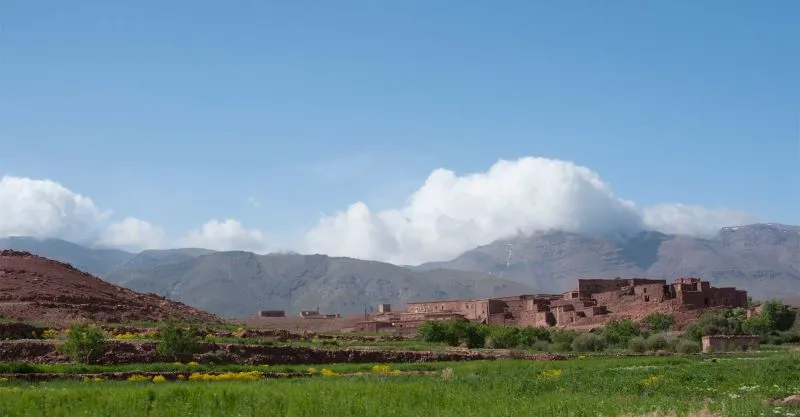
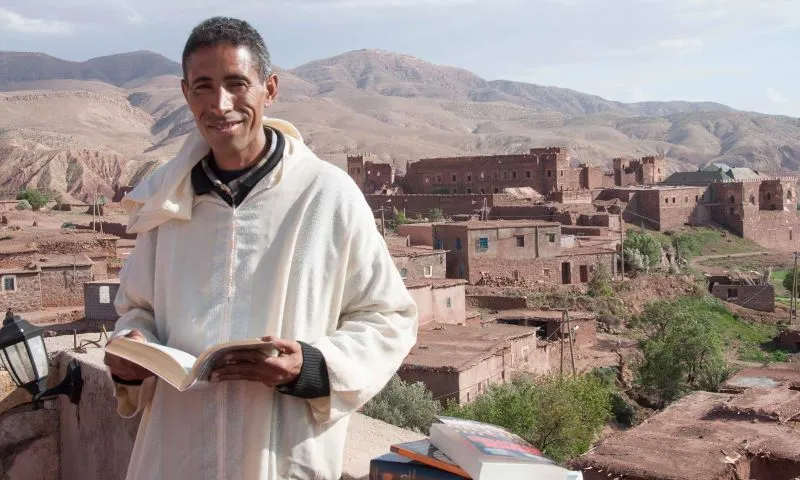
Telouet was once an essential passage for the great caravan routes that crossed the Atlas via the Telouet Pass, Tizi n’Telouet. It was also a strategic stopover for military expeditions, including the campaign led by Ahmed al-Mansur al-Dahabi towards Sudan in 1590.
From the 17th century onwards, the arrival of the Glaoua family marked a turning point in the history of Telouet. According to some sources, the family descended from a marabout named Mohamed Ou Saleh, originally from the region of Asfi and said to be of Umayyad lineage. Upon settling in Telouet, the Glaoua established a zaouia and distributed indulgences and blessings—baraka—inherited from their saintly ancestor. Religious influence soon fostered political ambition.
In the 18th century, Sultan Moulay Ismail granted the title of caïd to the Glaoua, entrusting them with control over the caravan route and the collection of passage dues. Later, in 1893, Sultan Moulay El Hassan (Hassan I) led a military expedition, a harka, to subdue rebellious tribes of the Bled es-Siba. On their return, the Sultan and his army were caught in heavy snow in Telouet. El Madani El Glaoui organised a grand diffa—a ceremonial reception—in their honour.
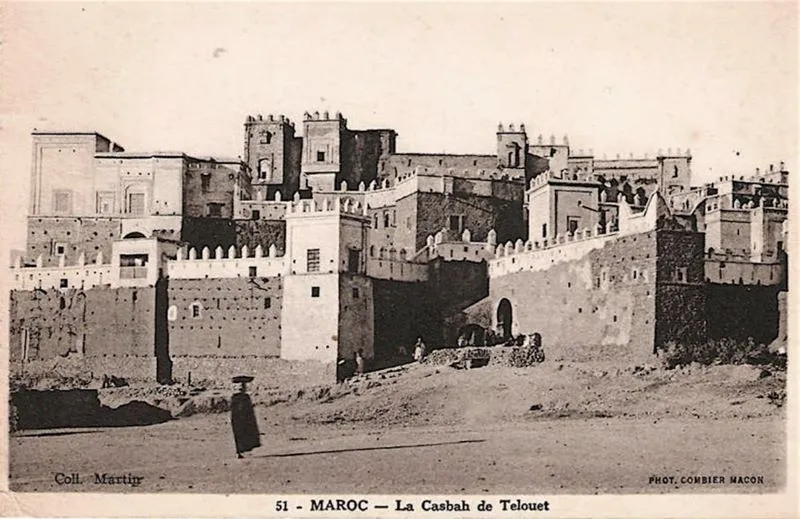
In gratitude, the Sultan granted El Madani the right to levy taxes on surrounding tribes and to collect customs from caravans. He also gifted him arms, including a German Krupp cannon, which is still displayed today in the Kasbah of Taourirt.
In 1908, El Madani El Glaoui was appointed Minister of War (Ouazir al-Harb).
The rise of the Glaoua transformed Telouet into the residence of regional caïds and a major seat of authority in the South. Construction of the Kasbah began in the 18th century in a Berber architectural style.
The expression Bled Es Siba referred in Morocco to areas where the Sultan’s authority was not recognised, particularly in the Middle Atlas, High Atlas and Rif regions, as opposed to Bled El Makhzen.
The rise of the Glaoua transformed Telouet into the residence of regional caïds and a major seat of authority in the South. Construction of the Kasbah began in the 18th century in a Berber architectural style.
Between the 19th and 20th centuries, oriental and Hispano-Moorish influences were introduced as the Kasbah was expanded. It became both a seat of governance and a noble residence, housing a court of justice, a prison, ceremonial courtyards, stables, and living quarters.
The renowned El Hadj Thami El Glaoui, one of the most powerful caïds of his era, lived here. He amassed considerable wealth through extensive land ownership and investments in the Omnium Nord-Africain and the CTM transport company. A man of refined tastes, he played golf in Marrakech and collected carpets and precious stones. He hosted distinguished guests such as Resident General Steeg, Sultan Sidi Mohammed (on 16 November 1931), Winston Churchill (1937), General Patton (1942), Jacques Majorelle, Marshal Lyautey, and many others.
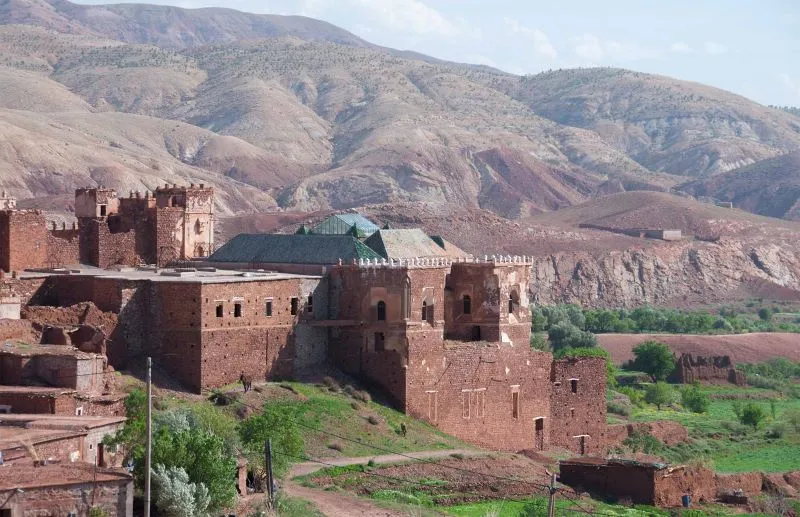
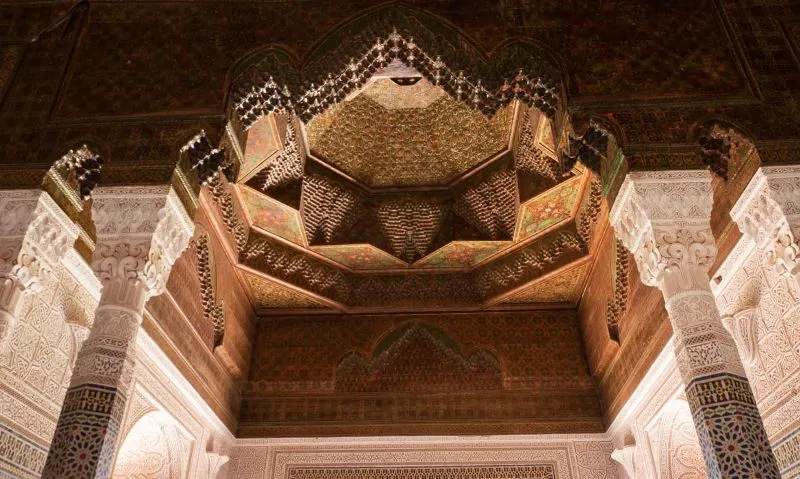
Today, the Kasbah is slowly succumbing to time and neglect. Only the main residence and a few annexes remain well enough preserved to receive the gaze of visitors. Yet these surviving chambers still reveal the finesse of the artisans’ craftsmanship, the elegance of its former masters, and the way of life of a world that has disappeared.
Every corner of the Kasbah is a page of Telouet’s human history, holding within its walls the memory of those caïds whom history remembers under a single name: the Lords of the Atlas.
Photo credits : Abdellah Azizi / azifoto.com
Location
